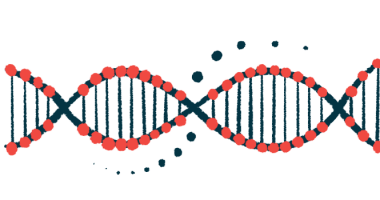Diagnosis of AADC deficiency is often delayed: Study in Middle East
Delay may prevent timely treatment, leading to poor patient outcomes

The misdiagnosis and delayed diagnosis of AADC deficiency is common and can prevent patients from getting timely access to the treatment they need, most often resulting in poor outcomes.
That’s according to a report of 16 patients in the Middle East, one of whom was found to carry a previously unreported mutation that likely caused the disease.
While each patient’s journey was unique, all but one failed to reach key motor milestones despite eventual treatment to ease the symptoms of AADC deficiency.
“There is an urgent need for earlier diagnosis, given the potential for gene therapy as a transformative treatment for AADC deficiency when provided at an early age,” researchers wrote.
The study, “Aromatic L-amino acid decarboxylase deficiency in countries in the Middle East: a case series and literature review,” was published in the European Journal of Pediatrics.
AADC deficiency usually shows signs early in life
AADC deficiency is caused by mutations in DDC, a gene that provides instructions for making an enzyme called AADC, short for aromatic L-amino acid decarboxylase. AADC is needed to make dopamine and serotonin, two major signaling molecules used by nerve cells in the brain to send messages between one another and to other parts of the body.
DDC mutations result in less enzyme than is needed or an enzyme that’s faulty and doesn’t work as well as it should. Without enough dopamine and serotonin, a wide range of symptoms can develop.
The disease usually manifests early in life, with symptoms such as hypotonia (low muscle tone) and failure to thrive appearing at birth or within the first few months.
Getting a diagnosis without delay is important to start treatment as early as possible. But symptoms may go unrecognized for months or years, as was previously reported in three children in Saudi Arabia.
Now, a team of researchers in Saudi Arabia, United Arab Emirates, and Qatar looked at the clinical records of 16 AADC deficiency patients (10 male and six female) from the Middle East to report on their symptoms and diagnostic workup.
This is “the largest series of patients with confirmed AADC deficiency from this region reported to date,” the team wrote.
There is an urgent need for earlier diagnosis, given the potential for gene therapy as a transformative treatment for AADC deficiency when provided at an early age.
Most patients in study showed symptoms of AADC deficiency in first year of life
All patients were born to blood-related parents, and five had a family history of AADC deficiency. At diagnosis, their ages ranged from 10 months to 18 years. Five had died before the team looked into their clinical records.
Most patients exhibited symptoms of AADC deficiency within the first year of life. Symptoms varied greatly between patients, with the most common being developmental delay, affecting all but one patient (94%).
This was followed by hypotonia (75%), sleep disturbances (56%), and oculogyric crises, or periods of fixed upward gaze of the eyes (56%). More than two-thirds (69%) experienced some form of gastrointestinal problems, including acid reflux, diarrhea, constipation, and feeding or swallowing problems.
Failure to thrive and excessive sweating were also common (38% each), and seizures, excessive crying, and irritability were each reported in nearly one-third of patients (31%).
“Although most patients had severe motor dysfunction and developmental delay, diagnosis was generally delayed, with only seven patients receiving a diagnosis within 1 year of symptom onset,” the researchers wrote.
Diagnosis was particularly delayed for four patients, occurring five to 18 years after symptom onset.
Most patients (88%) were wrongly diagnosed with another disease, most commonly cerebral palsy, a neurological condition that affects movement and coordination (38%), and epilepsy (31%).
For more than three-quarters of these patients (79%), the misdiagnosis meant a delay in access to treatment for AADC deficiency.
As part of their diagnostic workup, most patients (94%) underwent brain MRI or electroencephalography to record the brain’s electrical activity, with results frequently coming back normal or not specific. Many (62%) also underwent lab testing, including checking for AADC enzyme activity in blood.
Genetic testing found eight unique DDC mutations
Genetic testing for all patients revealed eight unique DDC mutations, including a previously unknown mutation, called c.1243-10A>G.
“Many of the patients were treated with the recommended first-line pharmacological treatments,” the researchers wrote, including vitamin B6 (81%), dopamine receptor agonists (56%), and monoamine oxidase inhibitors (19%).
“One patient responded well, but treatment outcomes were otherwise mostly limited to mild symptomatic improvements,” the team wrote.
The patient who responded well was diagnosed at 10 months old, received early treatment, and is currently able to walk, speak, and go to school. His older brother, who was diagnosed at 10 years of age, did not respond as well to treatment.
“In general, patients either showed no response to treatment or had only mild or moderate improvements in specific symptoms,” the researchers wrote, noting “a high unmet need for effective treatments for patients with AADC deficiency.”
“Raising awareness of AADC deficiency among primary care physicians in the Middle East region is key to ensure early access to future gene therapy treatments,” the team wrote.
The first gene therapy for AADC deficiency, Upstaza (eladocagene exuparvovec), is approved for use in patients 18 months and older in the European Union and the U.K.







